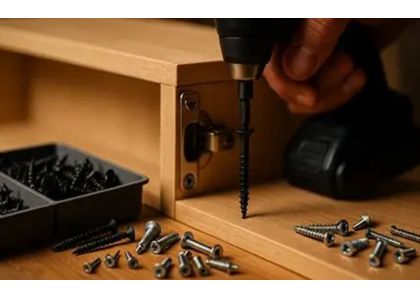
I. Principle of screw heat treatment
Heat treatment is achieved by heating the screw material to a certain temperature, holding it for a certain period of time, and then gradually cooling it down. This process changes the crystal structure and microstructure of the material, thereby improving its mechanical and physical properties, and enhancing the strength, hardness, toughness, wear resistance, corrosion resistance, etc. of the screw.
II. Types of screw heat treatment
1. Solution treatment
Solution treatment involves heating the screw material to the solution temperature, holding it for a certain period of time, allowing the solute and matrix to fully dissolve, and then rapidly cooling it to prevent the formation of precipitates in the solution.
2. Quenching treatment
Quenching treatment involves heating the screw material to the quenching temperature, then rapidly cooling it to refine the crystal grains and form a martensitic structure, thereby increasing the hardness and strength of the material.
3. Tempering treatment
Tempering treatment involves heating the quenched material to the tempering temperature, holding it for a certain period of time, allowing the martensite to transform into a more stable structure, thus providing both a certain level of hardness and strength, as well as a certain degree of toughness and ductility.
III. Functions of screw heat treatment
1. Enhancing the strength and hardness of screws
Screws are subjected to various loads during use, such as stretching, shearing, and torsion. Heat treatment can improve the crystal structure and microstructure of the screw material, increasing its strength and hardness, thereby enhancing the load-bearing capacity of the screw.
2. Increasing its corrosion resistance and wear resistance
Screws are prone to corrosion and wear in use. Heat treatment can improve the microstructure of the screw material's surface, forming a dense surface layer, thereby increasing its corrosion resistance and wear resistance, and extending the lifespan of the screw.
3. Improving the processing performance of screws
After heat treatment, the screw material becomes more uniform, internal stress is eliminated, and the material's processing hardening property is improved, making the material easier to shape and enhancing the accuracy and surface quality of the screw.